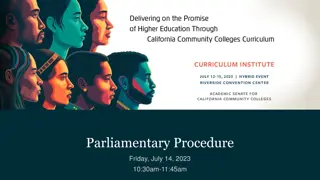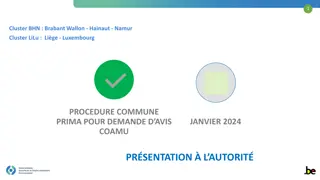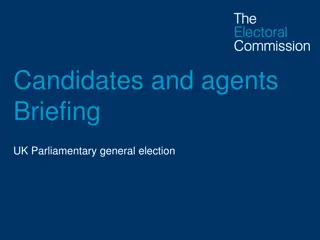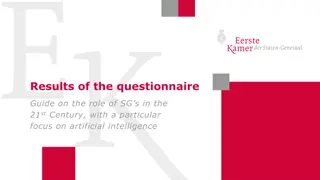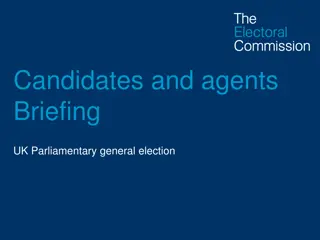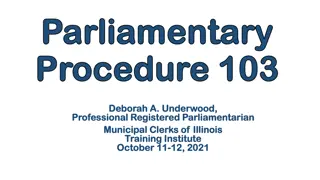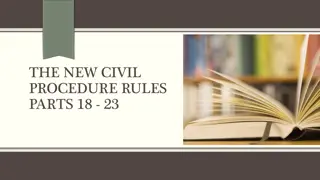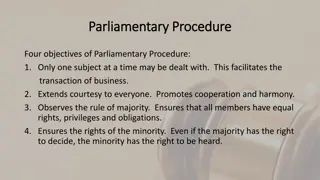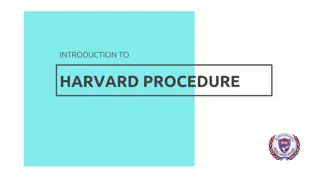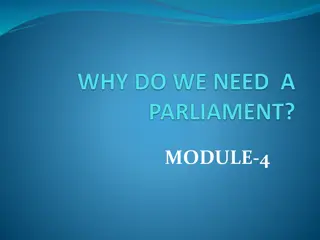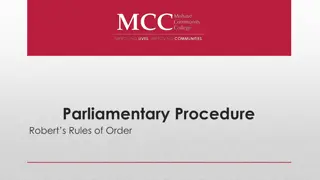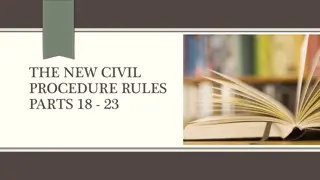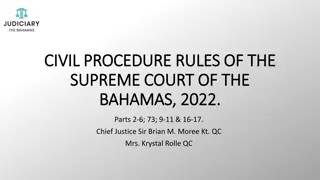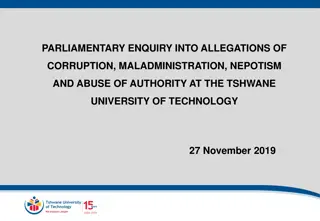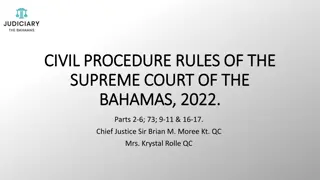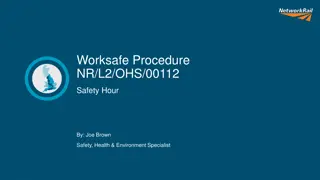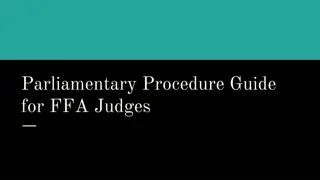
Parliamentary Rules of Procedure for County Boards and Committees
Explore the parliamentary rules of procedure for County's Boards, Commissions, and Committees, including governing rules, conflict of interest laws, membership processes, requirements for meetings, by-laws, and options for procedural rules such as Robert's Rules of Order.
Download Presentation

Please find below an Image/Link to download the presentation.
The content on the website is provided AS IS for your information and personal use only. It may not be sold, licensed, or shared on other websites without obtaining consent from the author. If you encounter any issues during the download, it is possible that the publisher has removed the file from their server.
You are allowed to download the files provided on this website for personal or commercial use, subject to the condition that they are used lawfully. All files are the property of their respective owners.
The content on the website is provided AS IS for your information and personal use only. It may not be sold, licensed, or shared on other websites without obtaining consent from the author.
E N D
Presentation Transcript
Parliamentary Rules of Procedure For the County s Boards, Commissions, and Committees
RULES OF PROCEDURE RULES OF PROCEDURE Board Policy A-74, Section E Authorizing Authority for the BCC (e.g., Board ordinance, resolution or policy) By-Laws adopted by the BCC and approved by the Board Procedural Rules adopted by the BCC Robert s Rules of Order if not covered by the above
POLICY A POLICY A- -74 74 Brief Overview of Governing Rules conflict of interest laws, Brown Act, Board policies, purpose of advisory boards, training requirements, etc. Membership nominations and filling vacancies processes Requirements for meetings: Brown Act, subcommittees, officers, budgets, minutes, recommendations to County departments or the Board, etc. By-Laws requirements: officers, minutes, voting, Brown Act, subcommittees, and organizational procedures
OPTIONS FOR PROCEDURAL RULES OPTIONS FOR PROCEDURAL RULES Robert s Rules of Order Rosenberg s Rules of Order BCC s own rules
ROBERTS RULES OF ORDER ROBERT S RULES OF ORDER The Rules have been in print since 1876 and are a guide for conducting meetings and making decisions as a group of purportedly any size (current = 12th Edition from 2020) They are contained in a book that set forth how to make motions, which motions require a second, which motions can be amended, which motions can have discussion before calling the questions, the order of addressing conflicting or supplemental motions, etc. Other portions of the book concern organization, nominations, and quorums that are addressed for BCCs in state law, A-74, and the BCC s authorizing authority Many organizations have created summaries of a few pages which the book explains in dozens or hundreds of pages The official Robert s Rules website has a Q&A database at: https://robertsrules.forumflash.com/
MOTIONS MOTIONS Main Motion: All business to be considered by an assembly is introduced by a main motion; this type of motion may only be considered if no other business is pending Subsidiary Motion: Change or affect how to handle a main motion by modifying it, delaying action on it, or disposing of it (vote on this before main motion) Privileged Motion: Urgent or important matter unrelated to pending business but must be addressed immediately (usually related to members, the organization, or meeting procedure) Incidental Motion: Questions procedure of other motions (must consider before the other motion) Motion to Table: Kills a motion Motion to Postpone: Delays a vote (can reopen debate on the main motion)
MOTION STEPS MOTION STEPS Motion: A member rises or raises a hand to signal the chairperson and makes the motion Second: Another member seconds the motion Restate motion: The chairperson restates the motion Debate: The members debate the motion; the person who makes a motion may speak on it first, if he or she expresses the desire to do so; debate is confined to the merits of the motion currently under consideration Vote: When the members are ready for the question, the chairperson restates the motion, and then first asks for affirmative votes, and then negative votes Announce the vote: The chairperson announces the result of the vote and any instructions
ROBERTS RULES SUMMARY CHART EXAMPLE ROBERT S RULES SUMMARY CHART EXAMPLE
ROSENBERGS RULES OF ORDER ROSENBERG S RULES OF ORDER Judge Rosenberg created these rules for California groups based on Robert s Rules he has been an attorney, a judge, a supervisor, and a city councilmember. He designed the rules to be easily understood and for smaller groups The rules explain the quorum, the role of the chair, motions and motion procedures, debate on the motions, voting requirements, and decorum The summary rules are only 10 pages and are available at: https://www.cacities.org/UploadedFiles/LeagueInternet/77/77d4ee2 b-c0bc-4ec2-881b-42ccdbbe73c9.pdf
EXPLANATION OF MOTIONS EXPLANATION OF MOTIONS (ROSENBERG S RULES) (ROSENBERG S RULES) Debatable: Basic or main motion Motion to amend Substitute motion Motion to reconsider No Debate: Motion to adjourn Motion to recess Motion to fix the time to adjourn Motion to table Motion to limit debate Two-Thirds Vote: Motion to limit debate Motion to close nominations Motion to object to consideration of the question Motion to suspend the rules
THANK YOU! ANY QUESTIONS?

